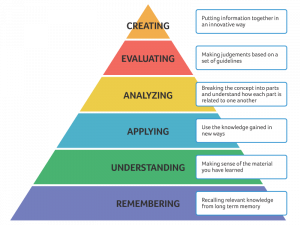Students and Thinking
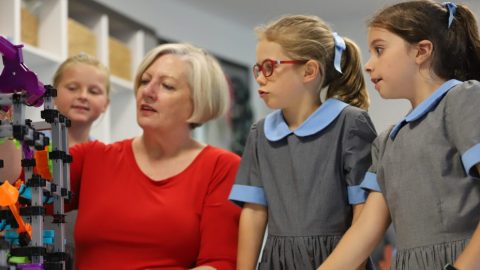
The words of Einstein, as stated in the caption below, circa 1920, are just as relevant today as they were back then. The primary purpose of education is to equip students with the skills and knowledge to enable them to pursue their interests, engage meaningfully in society, be able to think creatively and problem solve, be informed decision makers, and be increasingly knowledgeable about the world in which they live.
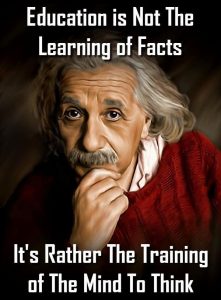
Students engage with learning in two ways: through cognition (the process of acquiring knowledge and understanding) and through thinking (the process of considering and reasoning). It is the latter of the two, the application of thinking, that students often find more difficult. This is particularly evident when they are required to problem solve, apply inductive and deductive reasoning, make inferences, predictions or comparisons, or to look at issues from a number of viewpoints.
There are a number of ways to help students to develop and practise their thinking.
At school, we support students in this process by setting out the steps they should follow, provide them with templates to structure their thought processes, discuss opinions and viewpoints, and share the ways they came to their conclusions or viewpoints. We also employ various thinking strategies or systems such as Edward de Bono’s ‘Thinking Hats’, Gardner’s ‘Multiple Intelligences’ and Bloom’s ‘Taxonomy’ to name a few.
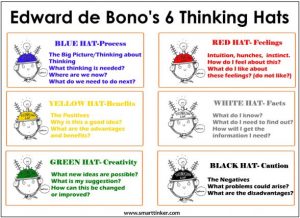
Thinking, as the process of considering and reasoning, takes time and much practice for students to become competent. When asking students to think about a problem, teachers find some students are quick to seek help rather than put time into pondering the problem. Children’s interactions with media, technology and people are now more immediate, with quick responses, speedy assistance and gratification. They have little need to wait, persevere or work things out for themselves; however, these behaviours are just what they need to be doing more.
At home, parents can help children to learn about and practise thinking by engaging them in discussions where they hear opinions, must explain or justify their answers or responses, make predictions with supporting ideas, and give a number of reasons to support their answer. Parents must not do the thinking for their children but give them time to think for themselves, at least partially. Modelling and allowing them to think before deciding, and telling them they have a few minutes to ponder an issue, lets them know that thinking takes time and is expected when making good decisions, careful considerations or solving problems.
Several Junior School staff are currently completing a Harvard course on thinking, with more staff enrolled to complete the course next year. Their expertise will be used in the development of a ‘Program of Thinking’ for Barbreck students from Years Prep to 6, with the girls benefitting in their ability to think, consider and reason.
More on this program will follow in upcoming articles this year.
Last Day of Term 2 Reminder
The last day for students this term is Thursday 20 June. Friday 21 June is a Pupil Free Day when Junior School staff will engage in professional development and planning.
Ms Karen McArdle, Head of Junior School
Literacy Groups in Year 4
In Year 4, we have commenced rotational Literacy Groups where we focus on spelling, reading response, handwriting and writing. These small groups allow us to further target the personalised Literacy Goals that we set at the start of the term.
The students enjoy the opportunity to work in small teacher-led groups on their writing goal and we are seeing a greater awareness of and use of specific language around their writing skills. These skills include writing more complex sentences, paragraphing, character description and resolutions in our narrative writing, and editing skills.
The Groups allow us, as teachers, to ensure the focus is in zone of proximal development for each student. The students are engaged and taking responsibility for their learning during independent activities also.
I like Literacy Groups because you can learn different things like spelling and handwriting. My favourite is handwriting. Literacy is all about trying your hardest and having fun. – Piper-Lynn Pascoe.
Literacy Groups are a big help. The groups help me understand the meaning of a lot of things like writing skills, reading responses, homophones and handwriting. They have helped me for the past month and I always get excited to go to Literacy. When the teachers and I edit my work, it makes me realise how much better it sounds. Not that my work is not good though, it is just a big help. When we do handwriting, it improves my cursive handwriting so much. Literacy Groups are a big help in my life. – Claudia Driver.
I like Literacy Groups because we do spelling, handwriting, reading responses and teacher groups. We have learnt about homophones. It has helped me to use better punctuation and spelling in my work. My group is now working on quotation marks. – Ziabella Armstrong.
I love Literacy Groups because the spelling is fun. We can be creative with all the activities, including the Homophone posters. The handwriting is helping me achieve my cursive handwriting goals. The teacher groups are helping us with our writing. We have been learning about commas, quotation marks and paragraphs. – Milla Cohen.
-
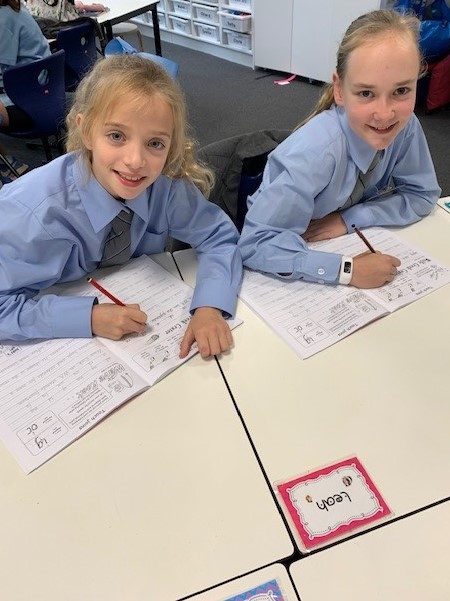
Ziabella Armstrong and Clara Calvert.
-
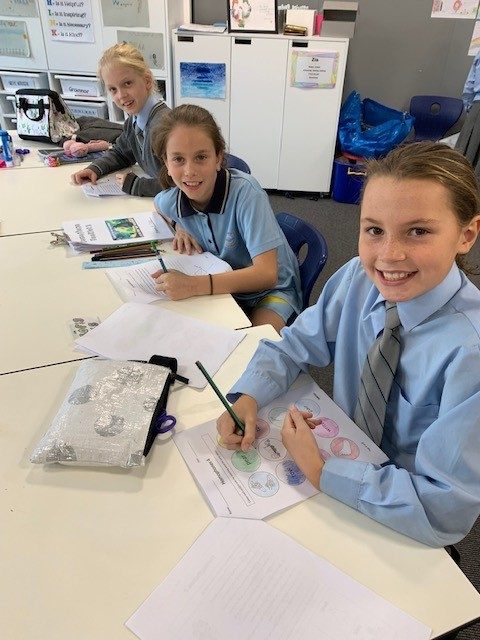
Charlotte Bell, Leah Kaplan and Chloe Handbury.
-
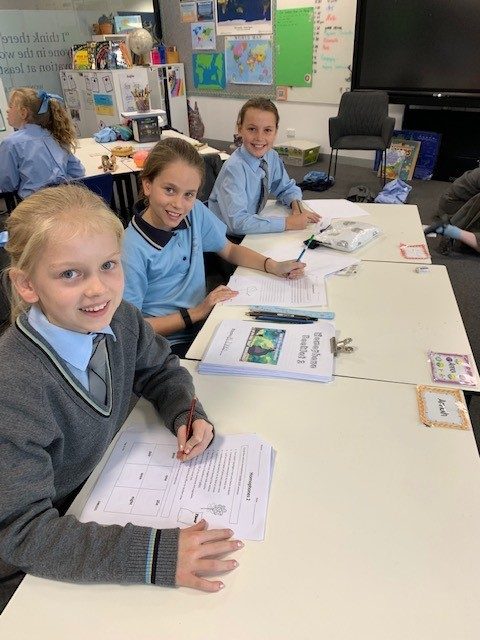
Charlotte Bell, Leah Kaplan and Chloe Handbury.
-
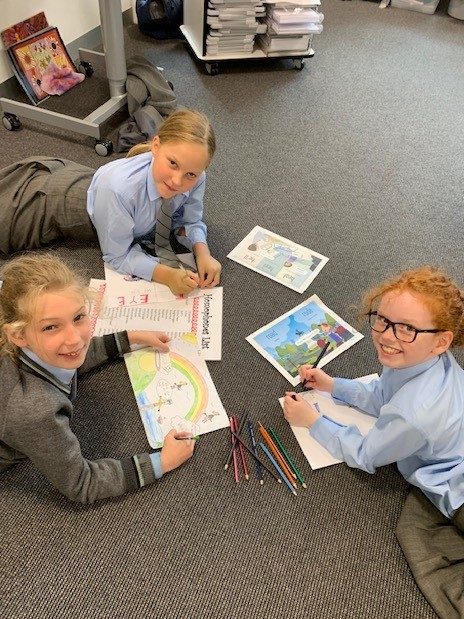
Milla Cohen, Hazel Wilson and Sofia Marshall.


